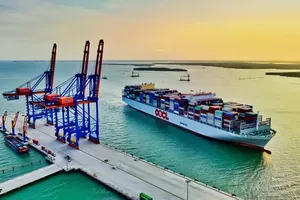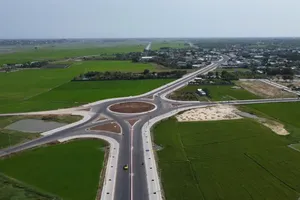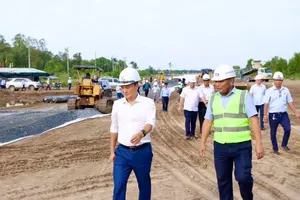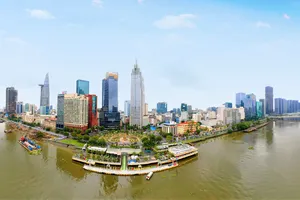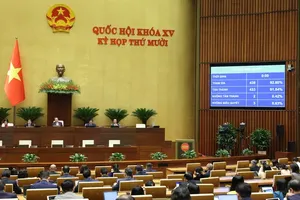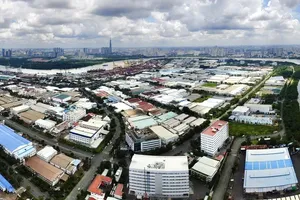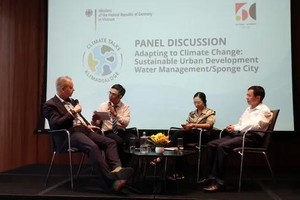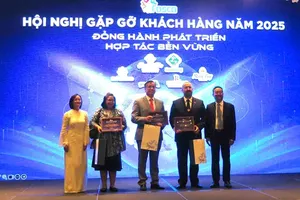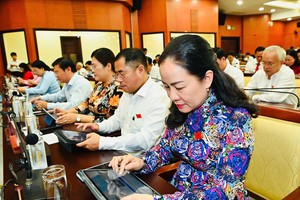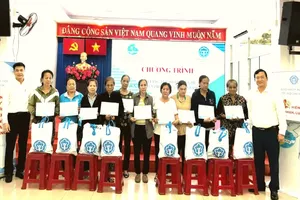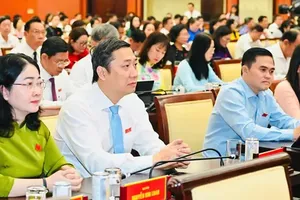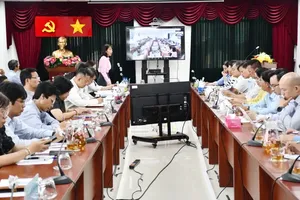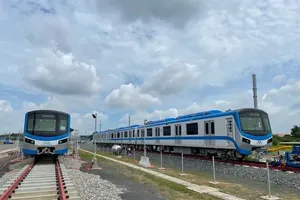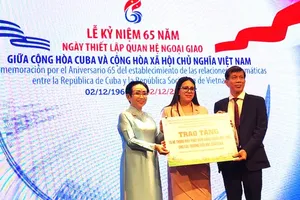
At the event, the city called for investment in 133 projects, including 73 in transport, 21 in urban improvement and resettlement housing construction, 11 in education and seven in flood reduction.
Of those, the metro line 1 Ben Thanh-Suoi Tien, metro line 2 Ben Thanh-Tham Luong, a science and technology park in District 9, and the Thu Thiem 2 urban area are billed as strategic projects.
In addition, export processing zones and industrial parks in the city are inviting investment in electronics, information technology, mechanical engineering, medical equipment, pharmaceutical chemistry and food.
Ho Chi Minh City is targeting an average GDP growth of 8.5 percent per year during 2016-2020. By 2020, the service sector will account for 56-58 percent of the gross regional domestic product (GRDP) and total social investment will make up 30 percent of the GRDP. The city also aims to raise income per capita to 9,800 USD in the next three years.
According to Pham Thiet Hoa, director of the city’s Investment and Trade Promotion Centre (ITPC), the city is currently contributing 21 percent to the national GDP, one third of the national budget, one fifth of the export revenue and 30 percent of FDI projects in Vietnam.
In the coming time, the city will continue to improve business climate, streamline administrative procedures as well as ensure sufficient human and land resources to meet demands of foreign investors.
Tina Phan, Director for for Indochina at the Hong Kong Trade Development Council, said that the Vietnamese southern economic hub is a dynamic city and an attractive destination for foreign firms. Hong Kong investors are particularly interested in transport infrastructure and sewage treatment projects in the city, she highlighted.
Simplifying administrative procedures, supporting land clearance and sharing information with the investors will help the city attract more investments, she said.
Of those, the metro line 1 Ben Thanh-Suoi Tien, metro line 2 Ben Thanh-Tham Luong, a science and technology park in District 9, and the Thu Thiem 2 urban area are billed as strategic projects.
In addition, export processing zones and industrial parks in the city are inviting investment in electronics, information technology, mechanical engineering, medical equipment, pharmaceutical chemistry and food.
Ho Chi Minh City is targeting an average GDP growth of 8.5 percent per year during 2016-2020. By 2020, the service sector will account for 56-58 percent of the gross regional domestic product (GRDP) and total social investment will make up 30 percent of the GRDP. The city also aims to raise income per capita to 9,800 USD in the next three years.
According to Pham Thiet Hoa, director of the city’s Investment and Trade Promotion Centre (ITPC), the city is currently contributing 21 percent to the national GDP, one third of the national budget, one fifth of the export revenue and 30 percent of FDI projects in Vietnam.
In the coming time, the city will continue to improve business climate, streamline administrative procedures as well as ensure sufficient human and land resources to meet demands of foreign investors.
Tina Phan, Director for for Indochina at the Hong Kong Trade Development Council, said that the Vietnamese southern economic hub is a dynamic city and an attractive destination for foreign firms. Hong Kong investors are particularly interested in transport infrastructure and sewage treatment projects in the city, she highlighted.
Simplifying administrative procedures, supporting land clearance and sharing information with the investors will help the city attract more investments, she said.
